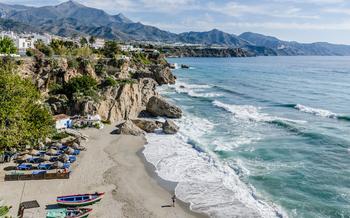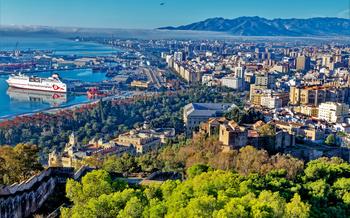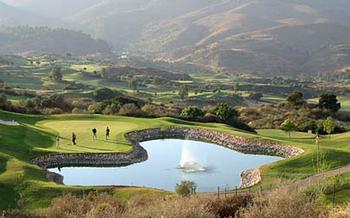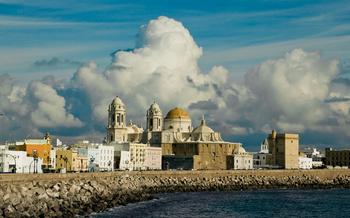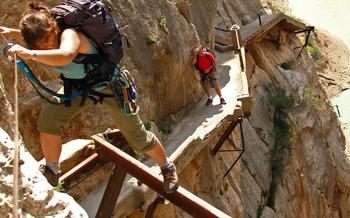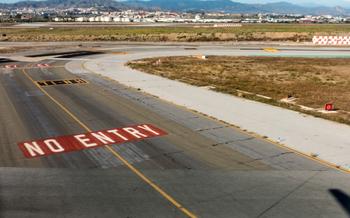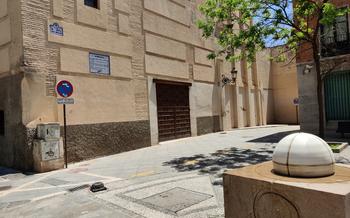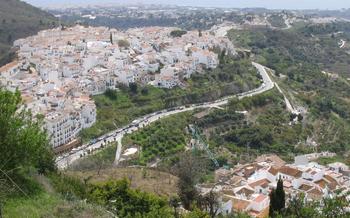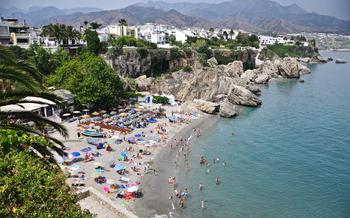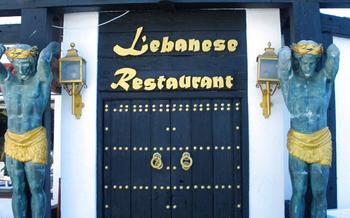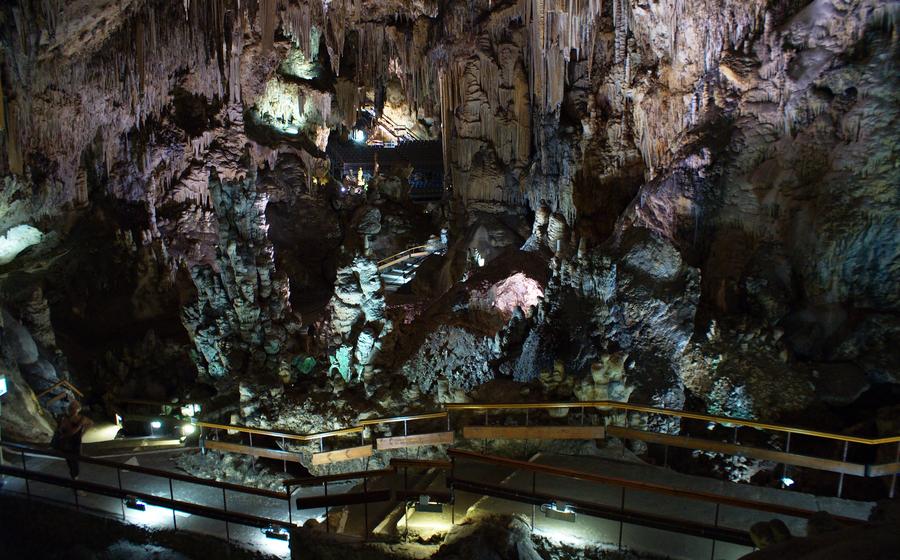
Cueva de Nerja
- Historical Background
- Natural Wonders
- Prehistoric Art
- Guided Tours
- Cave Museum
- Visitor Facilities
- Photography and Videography
- Conservation Efforts
- Nearby Attractions
- Festivals and Events
- Local Cuisine
- Souvenirs and Shopping
- Accommodation Options
- Insider Tip
Historical Background
The Cueva de Nerja, a treasure trove of history and prehistoric art, has captivated explorers, archaeologists, and visitors for over six decades. Its discovery in 1959 was a serendipitous event, as a group of boys stumbled upon a hidden entrance while exploring the surrounding hills. This chance encounter unveiled a labyrinthine world of underground chambers, adorned with breathtaking stalactites and stalagmites, and etched with the intricate artistry of prehistoric inhabitants.
The cave's archaeological significance is of paramount importance, as it boasts one of the most extensive collections of prehistoric rock paintings in Europe. These remarkable artworks, dating back to the Upper Paleolithic era, provide invaluable insights into the lives, beliefs, and artistic expressions of our ancestors. The presence of human remains, tools, and artifacts further underscores the cave's role as a significant prehistoric settlement.
The discovery of the Cueva de Nerja marked a pivotal moment in the study of human history and prehistory. Its exceptional preservation and the wealth of artifacts it contains have propelled it to the forefront of archaeological research. The cave's cultural and historical value has earned it the designation of a National Monument and a UNESCO World Heritage Site, ensuring its protection and preservation for future generations.
Natural Wonders
The Cueva de Nerja is a geological wonderland that showcases the awe-inspiring beauty and intricate formations of the natural world. As you delve into the cave's depths, you'll encounter a mesmerizing array of stalactites and stalagmites, each a testament to the patient work of water and minerals over millions of years. These stunning mineral deposits hang from the ceiling like delicate chandeliers, while others rise from the ground like majestic columns, creating a surreal and enchanting atmosphere.
The Cueva de Nerja is also home to a network of subterranean rivers and chambers, adding to its allure. The underground rivers, fed by rainwater seeping through the porous rock, have carved out intricate channels and tunnels, creating a subterranean waterworld. These chambers, with their unique acoustics and natural decorations, have served as natural concert halls and sanctuaries for prehistoric inhabitants.
As you explore the cave, keep an eye out for the glistening pools of water that collect at the base of some of the formations. These pools, often crystal-clear and still, reflect the surrounding rock formations, creating a mesmerizing kaleidoscope of light and shadow. Whether you're a nature enthusiast, a photographer, or simply someone who appreciates the wonders of the natural world, the Cueva de Nerja is sure to captivate your senses and leave you in awe of its beauty and grandeur.
Prehistoric Art
The Cueva de Nerja is renowned for its impressive collection of prehistoric art, which offers a glimpse into the lives and beliefs of our distant ancestors. The cave walls are adorned with hundreds of paintings and engravings, created using natural pigments and tools. These artworks depict a variety of subjects, including animals, humans, abstract symbols, and hunting scenes.
The styles and techniques used in the cave paintings vary greatly, suggesting that they were created over a long period of time, possibly spanning several millennia. Some of the most notable paintings include the "Great Gallery," which features a series of large, detailed animal figures, and the "Hall of the Hunters," which depicts a hunting scene with human figures and animals.
The cave engravings, known as petroglyphs, are also of great significance. They are typically simpler in design than the paintings, often consisting of lines and geometric shapes. However, they provide valuable insights into the symbolic language and beliefs of the prehistoric inhabitants of the cave.
The prehistoric art of the Cueva de Nerja is not only aesthetically impressive but also holds immense scientific and historical value. It offers a unique window into the minds and cultures of our ancestors, shedding light on their daily lives, their artistic traditions, and their relationship with the natural world.
Guided Tours
Exploring the Cueva de Nerja is best done through guided tours, led by experienced and knowledgeable guides. These tours are available in multiple languages, catering to visitors from different parts of the world. The duration of the tours typically ranges from 45 minutes to an hour, providing ample time to immerse yourself in the cave's wonders.
The cost of guided tours varies depending on the group size and the time of year. Generally, tickets start at around €10 for adults and €6 for children. Discounts may be available for families and groups.
During the tours, guides will lead you through the cave's various chambers, highlighting key features and formations. They will provide insights into the cave's history, the significance of the prehistoric art, and the ongoing conservation efforts. The tours are designed to be informative and engaging, ensuring that visitors gain a comprehensive understanding of this remarkable natural and cultural heritage site.
Cave Museum
Complementing the awe-inspiring natural wonders of the Cueva de Nerja, the on-site museum offers a captivating journey through the cave's history, archaeological discoveries, and cultural significance. Immerse yourself in interactive exhibits that bring the prehistoric era to life, showcasing the tools, artifacts, and remnants left behind by the cave's ancient inhabitants.
Admire meticulously preserved replicas of the cave paintings and engravings, providing a glimpse into the artistic prowess and symbolic expressions of our ancestors. Learn about the painstaking excavation and restoration efforts that have contributed to the preservation of this invaluable heritage. The museum serves as a gateway to understanding the profound connection between the Cueva de Nerja and the rich cultural tapestry of the region.
Visitor Facilities
The Cueva de Nerja is well-equipped to accommodate visitors from all walks of life. A spacious parking lot ensures that you can leave your vehicle safely while you explore the cave. Clean and well-maintained restrooms are available for your convenience. A gift shop offers a variety of souvenirs and mementos, allowing you to take a piece of the cave home with you.
For those with disabilities, the cave is wheelchair accessible, ensuring that everyone has the opportunity to experience its wonders. Information centers are located throughout the cave, providing multilingual assistance and brochures to enhance your understanding of the cave's history and significance. Multilingual guided tours are also available, catering to visitors from all over the world.
Photography and Videography
Capturing the enchanting beauty of the Cueva de Nerja through photography and videography is a popular pursuit among visitors. However, to ensure the preservation of this delicate ecosystem, certain guidelines and restrictions are in place.
Flash photography is strictly prohibited within the cave to prevent damage to the sensitive cave paintings and formations. Instead, tripods and low-light photography techniques are recommended to capture the intricate details and ambient atmosphere of the cave.
While personal photography and videography are generally permitted for non-commercial purposes, professional photographers and videographers must obtain prior authorization from the cave authorities. This ensures that their activities do not interfere with the conservation efforts and the overall visitor experience.
For those seeking the ultimate photographic experience, guided tours often offer exclusive opportunities to capture the cave's most iconic features and hidden corners. Professional photography and videography services are also available for hire, allowing visitors to document their visit with stunning high-quality images and videos.
Conservation Efforts
Preserving the Cueva de Nerja and its invaluable artwork is of paramount importance. To ensure its protection and sustainability, a range of conservation efforts have been implemented. Stringent measures limit the number of visitors allowed inside the cave daily, preventing excessive foot traffic and potential damage to the delicate formations. Access to certain sensitive areas is restricted, and guided tours are mandatory to minimize unsupervised exploration.
Advanced monitoring systems track environmental conditions, such as humidity and temperature, as these factors can impact the cave's delicate ecosystem. Specialized restoration techniques are employed to address any deterioration of the artwork, using materials that are compatible with the cave's natural composition.
Promoting responsible tourism is crucial. Visitors are educated about the cave's significance and the importance of respecting its fragile environment. Sustainable practices are encouraged, including waste reduction, energy conservation, and minimizing the use of harmful chemicals.
The Cueva de Nerja serves as a testament to the enduring legacy of our ancestors and the wonders of the natural world. Through the dedication of conservationists, scientists, and responsible tourism, we can ensure that this extraordinary site continues to captivate and inspire generations to come.
Nearby Attractions
The Cueva de Nerja is not just a standalone attraction; it is part of a larger tapestry of natural and cultural wonders waiting to be explored in the region. For those who want to extend their adventure beyond the cave, here are some nearby attractions that promise unforgettable experiences:
- Caves and Natural Landmarks:
- Cueva del Tesoro (Nerja): Another impressive cave in the region, known for its archaeological significance and beautiful rock formations.
- El Torcal de Antequera: A natural park featuring stunning limestone formations, hiking trails, and panoramic views.
-
Caminito del Rey: A thrilling walkway built along the walls of a steep gorge, offering breathtaking vistas and a unique perspective.
-
Historical Sites and Cultural Attractions:
- Nerja Museum: Delve into the region's history and culture through exhibits on prehistoric art, local traditions, and maritime heritage.
- Frigiliana: A charming whitewashed village perched on a hilltop, showcasing Moorish architecture and cobblestone streets.
-
Málaga City: The vibrant capital of the Costa del Sol, boasting a historic center, museums, and art galleries.
-
Popular Beaches and Coastal Destinations:
- Burriana Beach (Nerja): A popular stretch of sand with crystal-clear waters, ideal for sunbathing, swimming, and water sports.
- Maro-Cerro Gordo Cliffs: A stunning coastal area with secluded coves, turquoise waters, and opportunities for snorkeling and diving.
- Nerja Caves Natural Park: A protected coastal area with a series of caves, cliffs, and hiking trails offering breathtaking views.
Festivals and Events
Nerja and the surrounding region come alive with a vibrant calendar of festivals and events throughout the year. These celebrations offer a glimpse into the rich cultural heritage of the area and provide an opportunity for visitors to experience the local traditions and festivities.
One of the most popular events is the Nerja Cave Festival, held annually in the summer. The festival features a variety of activities and performances, including concerts, dance shows, and theatrical productions, all set against the stunning backdrop of the Cueva de Nerja.
Another highlight is the Feria de Nerja, a traditional Andalusian fair held in October. The fairground is filled with colorful stalls, food vendors, and amusement rides, creating a lively atmosphere. Visitors can enjoy traditional music and dance performances, sample local delicacies, and experience the vibrant energy of this popular event.
Throughout the year, Nerja also hosts various cultural and religious festivals, such as the Semana Santa (Holy Week) processions, the Feria del Carmen (Festival of Our Lady of Mount Carmel), and the Fiesta de San Isidro Labrador (Feast of Saint Isidro the Farmer). These celebrations showcase the deep-rooted religious traditions and customs of the region.
Attending local festivals and events is a great way to immerse yourself in the culture of Nerja and the Costa del Sol. Whether you are interested in music, dance, history, or religion, there is something for everyone to enjoy.
Local Cuisine
The culinary delights of Nerja and the Costa del Sol are a testament to the region's rich cultural heritage and bountiful natural resources. Here, the Mediterranean flavors blend seamlessly with traditional Spanish ingredients, creating a symphony of tastes that will tantalize your palate.
Among the must-try local delicacies is the pescaíto frito, a platter of freshly caught seafood lightly fried in olive oil. The espetos de sardinas, grilled sardines skewered on bamboo sticks, are another local favorite, best enjoyed on the beach at sunset.
For a taste of the region's culinary traditions, indulge in a hearty paella, a saffron-infused rice dish cooked with seafood, chicken, and vegetables. The gazpacho andaluz, a chilled tomato soup, is a refreshing choice on a hot summer day.
Nerja's coastal location means that fresh seafood is abundant. Don't miss the opportunity to savor the mariscos a la plancha, a selection of grilled seafood such as clams, mussels, and prawns.
For a sweet treat, try the bienmesabe, a traditional almond dessert with a creamy texture and a delicate flavor. The churros con chocolate, crispy fried dough served with hot chocolate, are a popular breakfast or snack.
To fully immerse yourself in the local cuisine, visit the bustling markets of Nerja, where you can find fresh produce, spices, and local delicacies. Cooking classes are also available, offering a hands-on experience and the chance to learn the secrets of traditional Spanish dishes.
Souvenirs and Shopping
A visit to the Cueva de Nerja is not complete without taking home a souvenir to remember your experience. The gift shop at the cave entrance offers a wide range of unique souvenirs and handicrafts inspired by the cave and the region. From replicas of prehistoric cave paintings to hand-crafted pottery and jewelry, there is something for every taste and budget.
For a truly authentic experience, head to the local markets and artisan shops in Nerja and the surrounding villages. These markets are a treasure trove of unique products, including handmade leather goods, colorful ceramics, and intricate textiles. You can also find delicious local delicacies such as olive oil, honey, and wine, making for perfect souvenirs or gifts to take home.
When shopping for souvenirs in Nerja, be sure to keep an eye out for products made from local materials and traditional techniques. This not only supports the local economy but also ensures that you are getting a truly authentic souvenir. You can find beautiful hand-woven baskets, embroidered linens, and intricate silver jewelry that showcase the rich craftsmanship of the region.
Remember to bargain politely at the markets, as it is a part of the local culture and can lead to some great deals. And if you're looking for something truly special, consider commissioning a custom-made piece from one of the many talented local artisans. This will give you a one-of-a-kind souvenir that will be cherished for years to come.
Accommodation Options
The Cueva de Nerja is surrounded by a range of accommodation options, catering to different budgets and preferences. For a comfortable and convenient stay, consider booking a room at a nearby hotel or guesthouse. These establishments offer amenities such as private bathrooms, air conditioning, and often include breakfast in the room rate.
If you prefer a more personalized experience, opt for a vacation rental. Many apartments, villas, and houses are available in the area, providing a home away from home with added space and privacy. These rentals are ideal for families or groups traveling together.
To find the best deals, book your accommodation in advance, especially if visiting during the peak season. Online platforms and travel agencies offer a wide selection of options, making it easy to compare prices and amenities.
Here are a few recommendations for accommodation near the Cueva de Nerja:
- Hotel Nerja Club: A modern and stylish hotel with panoramic views of the Mediterranean Sea.
- Hostal El Refugio: A cozy and affordable guesthouse with a friendly atmosphere.
- Apartamentos Turísticos Cueva de Nerja: Self-catered apartments located just a short walk from the cave.
No matter your budget or preferences, you'll find a range of accommodation options to suit your needs near the Cueva de Nerja, ensuring a comfortable and enjoyable stay in this beautiful region of Spain.
Insider Tip
-
Seek out the secret spots within the cave that offer the most breathtaking views and unique photo opportunities. Venture beyond the main tourist routes to discover hidden chambers and secluded corners where you can capture the essence of the cave's natural beauty without the crowds.
-
Plan your visit during the off-season (typically from November to March) to experience a more intimate and less crowded atmosphere. You'll have the opportunity to explore the cave at your own pace, immerse yourself in its tranquility, and truly appreciate the wonders it holds.
-
Don't miss the hidden gems in the surrounding area that are often overlooked by tourists. Explore the nearby villages, hike through the picturesque countryside, or relax on the pristine beaches of the Costa del Sol. Discover the region's rich history, culture, and gastronomy, and create a truly memorable travel experience.
